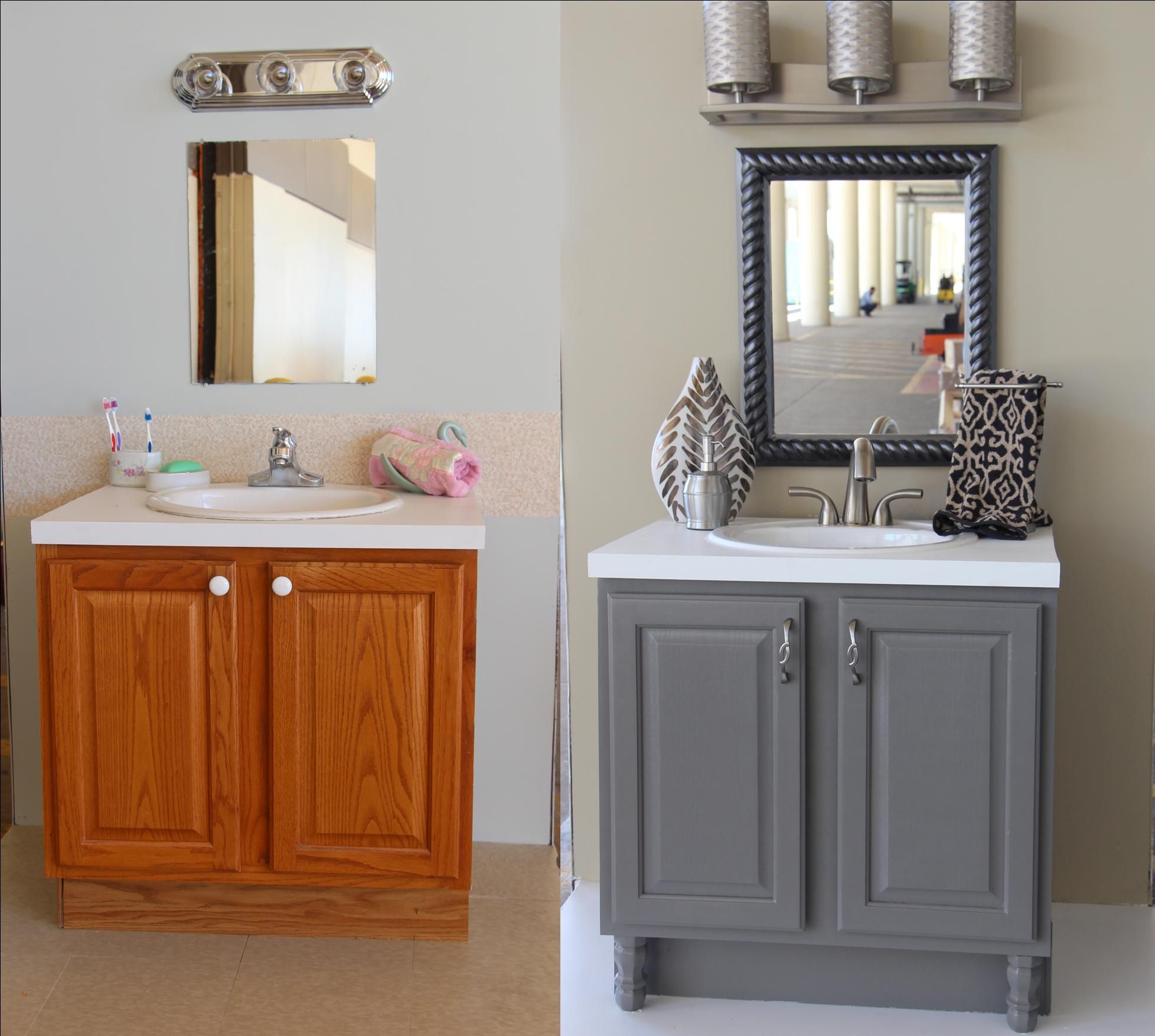The Transformation Power of Paint: Painting Laminate Bathroom Cabinets Before And After
Painting laminate bathroom cabinets can dramatically transform the look and feel of your bathroom, offering a cost-effective alternative to replacing them entirely. A fresh coat of paint can instantly revitalize outdated cabinets, creating a modern and stylish space.
Color Palettes for a Spa-Like Atmosphere
Creating a spa-like atmosphere in your bathroom can be achieved through strategic color choices. Here are some color palettes that evoke a sense of tranquility and relaxation:
- Neutral Tones: Shades of white, gray, and beige create a clean and serene ambiance. These colors serve as a calming backdrop, allowing other elements in the bathroom to take center stage.
- Earthy Tones: Warm hues like terracotta, olive green, and muted browns connect you to nature, fostering a sense of peace and grounding.
- Cool Blues and Greens: Inspired by the calming waters and lush greenery, these colors create a tranquil and refreshing atmosphere. Think soft blues, mint greens, and aqua tones.
Visual Impact of Painting vs. Replacing Cabinets, Painting laminate bathroom cabinets before and after
Painting laminate cabinets offers a cost-effective way to achieve a significant visual impact. While replacing cabinets provides a complete overhaul, painting offers a budget-friendly option that can deliver impressive results.
- Cost-Effectiveness: Painting laminate cabinets is significantly less expensive than replacing them. This allows you to achieve a fresh look without breaking the bank.
- Customization: Painting allows for greater customization. You can choose from a wide range of colors and finishes to create a unique and personalized look that reflects your style.
- Time-Saving: Painting is a relatively quick and easy process compared to replacing cabinets, minimizing disruption to your bathroom routine.
The Process

Transforming your laminate bathroom cabinets with paint is a rewarding project that can refresh your bathroom’s look without a full remodel. However, proper preparation is key to achieving a durable and professional finish. This section will guide you through the essential steps, providing you with the tools and techniques to ensure success.
Preparing Laminate Cabinets for Painting
Before applying paint, it’s crucial to prepare the surface to ensure optimal adhesion and a smooth, even finish. This involves cleaning, sanding, and priming the cabinets.
- Cleaning: Start by thoroughly cleaning the cabinets to remove any dirt, grease, or soap residue. Use a mild dish soap and warm water, scrubbing with a non-abrasive sponge. Rinse well and allow the cabinets to dry completely.
- Sanding: Once dry, lightly sand the cabinet surfaces using fine-grit sandpaper (120-grit or higher). This helps create a rough surface for the primer to adhere to. Focus on sanding down any imperfections, such as scratches or bumps.
- Priming: Applying a primer specifically designed for laminate surfaces is essential. It provides a bonding layer between the laminate and the paint, enhancing adhesion and preventing the paint from peeling. Use a high-quality primer and apply it evenly with a brush or roller. Allow the primer to dry completely before proceeding to the next step.
Painting Laminate Cabinets
With the cabinets properly prepared, you can now move on to the painting process. Here’s a step-by-step guide to ensure a professional finish:
| Step | Materials Needed | Description | Tips and Tricks |
|---|---|---|---|
| 1. Prepare the Area: |
|
|
|
| 2. Choose Paint: |
|
|
|
| 3. Apply First Coat: |
|
|
|
| 4. Apply Second Coat: |
|
|
|
| 5. Clean Up: |
|
|
|
Beyond the Basics

While a fresh coat of paint can instantly revitalize your bathroom cabinets, there’s room for taking your transformation to the next level. By incorporating unique design elements, you can infuse your bathroom with personality and create a truly custom look.
Adding Visual Interest with Design Elements
Adding visual interest to your painted cabinets goes beyond simply choosing a color. There are numerous ways to elevate your project with unique design elements. These elements can range from subtle accents to bold statements, all contributing to a more personalized and visually appealing bathroom.
- Stencils: Stencils offer a simple yet effective way to add intricate patterns to your cabinets. You can find a wide array of designs, from delicate florals to geometric patterns. Applying stencils is a relatively easy process, even for beginners, and it allows you to create a custom look without extensive artistic skills. For instance, using a stencil to create a delicate floral pattern on the cabinet doors can add a touch of elegance to a modern bathroom.
- Decorative Hardware: Replacing standard cabinet knobs and pulls with unique alternatives can instantly elevate the look of your bathroom. Explore options like crystal knobs, antique-style pulls, or even personalized handles. Consider the overall style of your bathroom when selecting hardware. For a farmhouse-inspired bathroom, you might opt for rustic wooden knobs, while a contemporary bathroom might benefit from sleek, minimalist handles.
- Contrasting Colors: Adding pops of contrasting color can create visual interest and define specific areas within your bathroom. For example, painting the cabinet doors a bold color while keeping the cabinet frames a neutral shade can add a vibrant accent. Alternatively, you could use contrasting colors to highlight specific features, such as the cabinet trim or the countertop edge. This approach can add depth and dimension to your bathroom.
- Textured Finishes: Incorporating textured finishes can add a tactile element to your cabinets and enhance their visual appeal. You can achieve textured finishes using various techniques, such as applying a glaze or using a paint with a textured effect. For a more rustic look, consider applying a distressed finish, which can be achieved by lightly sanding the paint after it dries.
